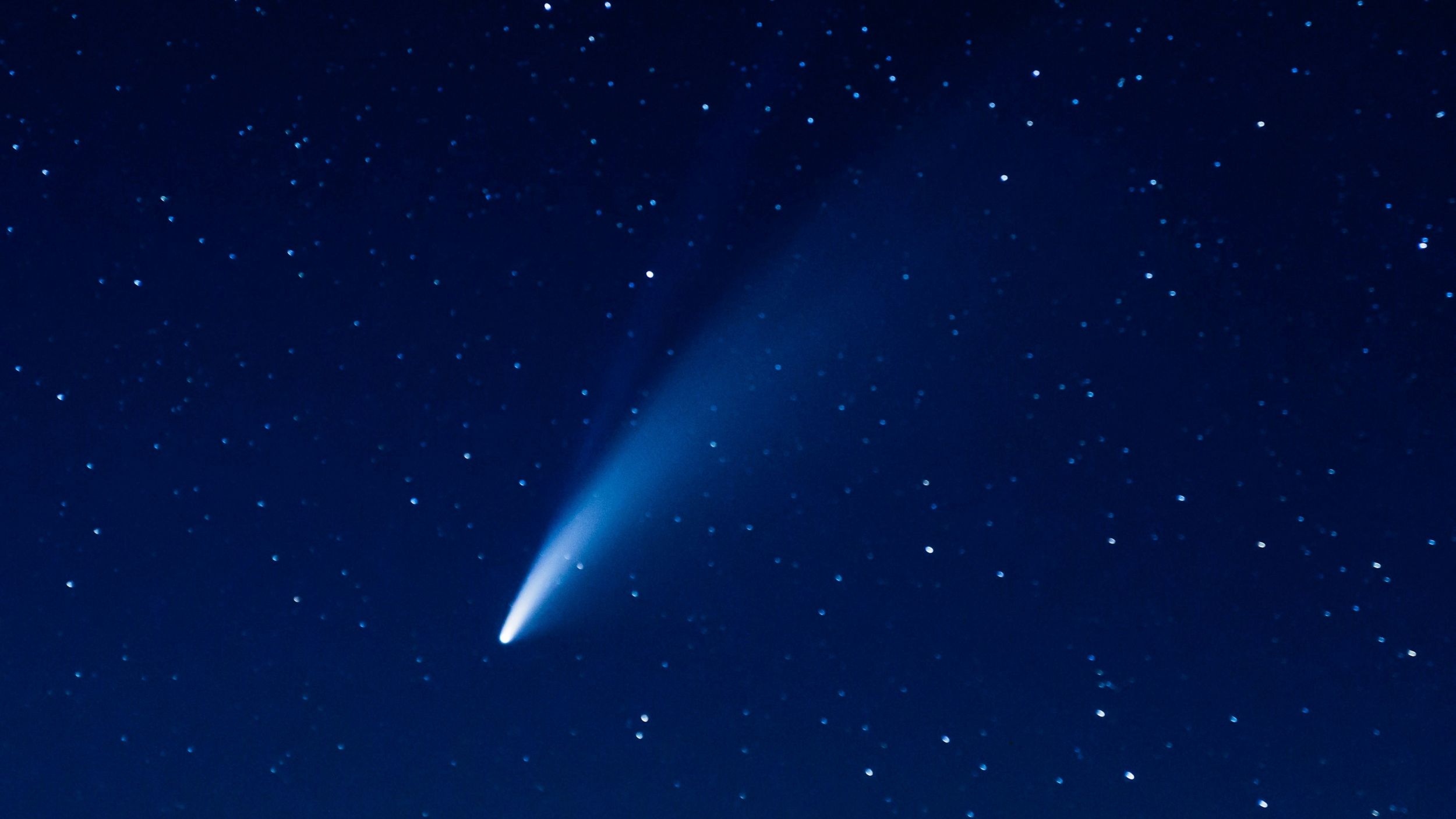Science
Harvard’s Avi Loeb Proposes Alien Technology Behind 3I/ATLAS

The discovery of the interstellar object 3I/ATLAS has ignited a heated debate in the scientific community regarding its origins. First identified in July 2025, the object has drawn attention due to its unusual characteristics, particularly the observations made by Avi Loeb, an astrophysicist from Harvard University. While many experts classify 3I/ATLAS as a natural comet, Loeb suggests that its behavior indicates potential extraterrestrial technology.
Unusual Characteristics Spark Debate
The intrigue surrounding 3I/ATLAS centers on its perihelion passage, which occurred on October 29, 2025. Typically, comets that approach the Sun experience significant fragmentation due to its intense heat and gravitational forces. However, images captured on November 11, 2025, by the Nordic Optical Telescope showed 3I/ATLAS as a singular entity, contradicting expectations of disintegration. According to Loeb, this observation is inconsistent with the natural comet hypothesis.
Loeb previously calculated that 3I/ATLAS exhibited a mass loss rate that was too high for a conventional comet. He argued that the surface area required to account for the energy and mass flow in its gaseous jets—some extending up to a million kilometers—was “untenable.” He noted that during its closest approach to the Sun, the object absorbed approximately 700 Joules per square meter per second, suggesting an absorbing area exceeding 1,600 square kilometers (617 square miles), which he deemed implausible for a natural object.
Compelling Hypotheses and Alternative Explanations
The behavior of 3I/ATLAS further complicates its classification. While typical cometary tails are pushed away from the Sun by solar wind, this object exhibited an “anti-tail” directed towards the star. Loeb proposed that this phenomenon could indicate the presence of technological thrusters directing exhaust towards the Sun, potentially enhancing its speed through a gravitational assist. He also pointed out the object’s trajectory, which aligns closely with the ecliptic plane, raising questions about its origin.
Moreover, 3I/ATLAS is estimated to be around one million times more massive than 1I/’Oumuamua, the first recognized interstellar object, which Loeb had previously hypothesized might be artificial. The detection of nickel emissions without corresponding iron further fuels speculation, as this combination is typically associated with industrial alloys used in aerospace applications.
Despite the allure of Loeb’s theories, the broader scientific community remains skeptical. Recent findings from the MeerKAT radio telescope in South Africa have provided compelling evidence supporting the natural origin of 3I/ATLAS. The telescope detected radio absorption lines produced by hydroxyl radicals, confirming the object is losing water as it approaches the Sun, consistent with the behavior of a water-rich comet.
Dr. Darryl Seligman, an astronomy professor at Michigan State University, has countered Loeb’s disintegration claims, asserting that the intact state of 3I/ATLAS aligns with his expectations based on its size, which is estimated to be around 1 kilometer (0.6 miles). Similarly, Qicheng Zhang from the Lowell Observatory confirmed that all images depict a stable comet without signs of fragmentation.
While Loeb acknowledges the hydroxyl radical detection, he advocates for further research and transparency. He leads the Galileo Project, which aims to search for extraterrestrial artifacts. As 3I/ATLAS continues its hyperbolic trajectory towards Earth, with a closest approach anticipated in December 2025 at a distance of approximately 167 million miles, the debate over its true nature persists. Whether it is a natural celestial body or a manufactured extraterrestrial visitor, the discussions around 3I/ATLAS underscore humanity’s enduring curiosity about the cosmos.
-

 Health3 months ago
Health3 months agoNeurologist Warns Excessive Use of Supplements Can Harm Brain
-

 Health3 months ago
Health3 months agoFiona Phillips’ Husband Shares Heartfelt Update on Her Alzheimer’s Journey
-

 Science2 months ago
Science2 months agoBrian Cox Addresses Claims of Alien Probe in 3I/ATLAS Discovery
-

 Science2 months ago
Science2 months agoNASA Investigates Unusual Comet 3I/ATLAS; New Findings Emerge
-

 Science1 month ago
Science1 month agoScientists Examine 3I/ATLAS: Alien Artifact or Cosmic Oddity?
-

 Entertainment2 months ago
Entertainment2 months agoLewis Cope Addresses Accusations of Dance Training Advantage
-

 Entertainment5 months ago
Entertainment5 months agoKerry Katona Discusses Future Baby Plans and Brian McFadden’s Wedding
-

 Science1 month ago
Science1 month agoNASA Investigates Speedy Object 3I/ATLAS, Sparking Speculation
-

 Entertainment4 months ago
Entertainment4 months agoEmmerdale Faces Tension as Dylan and April’s Lives Hang in the Balance
-

 World3 months ago
World3 months agoCole Palmer’s Cryptic Message to Kobbie Mainoo Following Loan Talks
-

 Science1 month ago
Science1 month agoNASA Scientists Explore Origins of 3I/ATLAS, a Fast-Moving Visitor
-

 Entertainment4 months ago
Entertainment4 months agoMajor Cast Changes at Coronation Street: Exits and Returns in 2025









